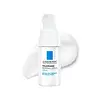What's inside
What's inside
 Key Ingredients
Key Ingredients

 Benefits
Benefits

 Concerns
Concerns

 Ingredients Side-by-side
Ingredients Side-by-side

Water
Skin ConditioningGlycerin
HumectantButylene Glycol
HumectantPropanediol
SolventSqualane
EmollientButyrospermum Parkii Butter
Skin ConditioningPentylene Glycol
Skin ConditioningNiacinamide
SmoothingCellulose
AbsorbentZea Mays Starch
AbsorbentPolysorbate 20
EmulsifyingSalvia Miltiorrhiza Root Extract
Skin ConditioningGlyceryl Acrylate/Acrylic Acid Copolymer
HumectantSphingomonas Ferment Extract
Skin ConditioningAmmonium Polyacryloyldimethyl Taurate
Emulsion StabilisingHydroxyacetophenone
AntioxidantCitric Acid
BufferingTrisodium Ethylenediamine Disuccinate
Acetyl Dipeptide-1 Cetyl Ester
Skin ConditioningWater, Glycerin, Butylene Glycol, Propanediol, Squalane, Butyrospermum Parkii Butter, Pentylene Glycol, Niacinamide, Cellulose, Zea Mays Starch, Polysorbate 20, Salvia Miltiorrhiza Root Extract, Glyceryl Acrylate/Acrylic Acid Copolymer, Sphingomonas Ferment Extract, Ammonium Polyacryloyldimethyl Taurate, Hydroxyacetophenone, Citric Acid, Trisodium Ethylenediamine Disuccinate, Acetyl Dipeptide-1 Cetyl Ester
Water
Skin ConditioningCaprylic/Capric Triglyceride
MaskingGlycerin
HumectantStearyl Alcohol
EmollientCetyl Alcohol
EmollientGlyceryl Stearate
EmollientBeeswax
Emulsion StabilisingBakuchiol
AntimicrobialTocopherol
AntioxidantBeta Vulgaris Root Extract
Skin ConditioningCitrullus Lanatus Fruit Extract
Skin ConditioningLens Esculenta Fruit Extract
Skin ConditioningPyrus Malus Fruit Extract
Skin ConditioningGlycine Soja Oil
EmollientScutellaria Alpina Flower/Leaf/Stem Extract
Skin ConditioningTrifolium Pratense Leaf Extract
AntioxidantAdansonia Digitata Fruit Extract
EmollientHibiscus Sabdariffa Flower Extract
Skin ConditioningChlorella Vulgaris Extract
Skin ConditioningPlankton Extract
Skin ConditioningPhragmites Communis Extract
Skin ConditioningPoria Cocos Extract
Skin ConditioningStearic Acid
CleansingRibose
HumectantXanthan Gum
EmulsifyingLecithin
EmollientHydrolyzed Corn Starch
HumectantCitric Acid
BufferingDipotassium Glycyrrhizate
HumectantP-Anisic Acid
MaskingPotassium Stearate
CleansingLinoleic Acid
CleansingLinolenic Acid
CleansingLactic Acid
BufferingMagnesium Aluminum Silicate
AbsorbentSodium Lactate
BufferingSodium PCA
HumectantSodium Citrate
BufferingSodium Benzoate
MaskingPotassium Sorbate
PreservativePhenoxyethanol
PreservativeWater, Caprylic/Capric Triglyceride, Glycerin, Stearyl Alcohol, Cetyl Alcohol, Glyceryl Stearate, Beeswax, Bakuchiol, Tocopherol, Beta Vulgaris Root Extract, Citrullus Lanatus Fruit Extract, Lens Esculenta Fruit Extract, Pyrus Malus Fruit Extract, Glycine Soja Oil, Scutellaria Alpina Flower/Leaf/Stem Extract, Trifolium Pratense Leaf Extract, Adansonia Digitata Fruit Extract, Hibiscus Sabdariffa Flower Extract, Chlorella Vulgaris Extract, Plankton Extract, Phragmites Communis Extract, Poria Cocos Extract, Stearic Acid, Ribose, Xanthan Gum, Lecithin, Hydrolyzed Corn Starch, Citric Acid, Dipotassium Glycyrrhizate, P-Anisic Acid, Potassium Stearate, Linoleic Acid, Linolenic Acid, Lactic Acid, Magnesium Aluminum Silicate, Sodium Lactate, Sodium PCA, Sodium Citrate, Sodium Benzoate, Potassium Sorbate, Phenoxyethanol
 Reviews
Reviews

Ingredients Explained
These ingredients are found in both products.
Ingredients higher up in an ingredient list are typically present in a larger amount.
Citric Acid is an alpha hydroxy acid (AHA) naturally found in citrus fruits like oranges, lemons, and limes.
Like other AHAs, citric acid can exfoliate skin by breaking down the bonds that hold dead skin cells together. This helps reveal smoother and brighter skin underneath.
However, this exfoliating effect only happens at high concentrations (20%) which can be hard to find in cosmetic products.
Due to this, citric acid is usually included in small amounts as a pH adjuster. This helps keep products slightly more acidic and compatible with skin's natural pH.
In skincare formulas, citric acid can:
While it can provide some skin benefits, research shows lactic acid and glycolic acid are generally more effective and less irritating exfoliants.
Most citric acid used in skincare today is made by fermenting sugars (usually from molasses). This synthetic version is identical to the natural citrus form but easier to stabilize and use in formulations.
Read more about some other popular AHA's here:
Learn more about Citric AcidGlycerin is already naturally found in your skin. It helps moisturize and protect your skin.
A study from 2016 found glycerin to be more effective as a humectant than AHAs and hyaluronic acid.
As a humectant, it helps the skin stay hydrated by pulling moisture to your skin. The low molecular weight of glycerin allows it to pull moisture into the deeper layers of your skin.
Hydrated skin improves your skin barrier; Your skin barrier helps protect against irritants and bacteria.
Glycerin has also been found to have antimicrobial and antiviral properties. Due to these properties, glycerin is often used in wound and burn treatments.
In cosmetics, glycerin is usually derived from plants such as soybean or palm. However, it can also be sourced from animals, such as tallow or animal fat.
This ingredient is organic, colorless, odorless, and non-toxic.
Glycerin is the name for this ingredient in American English. British English uses Glycerol/Glycerine.
Learn more about GlycerinWater. It's the most common cosmetic ingredient of all. You'll usually see it at the top of ingredient lists, meaning that it makes up the largest part of the product.
So why is it so popular? Water most often acts as a solvent - this means that it helps dissolve other ingredients into the formulation.
You'll also recognize water as that liquid we all need to stay alive. If you see this, drink a glass of water. Stay hydrated!
Learn more about Water